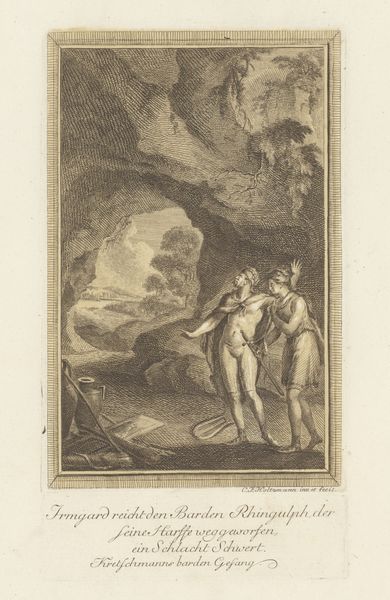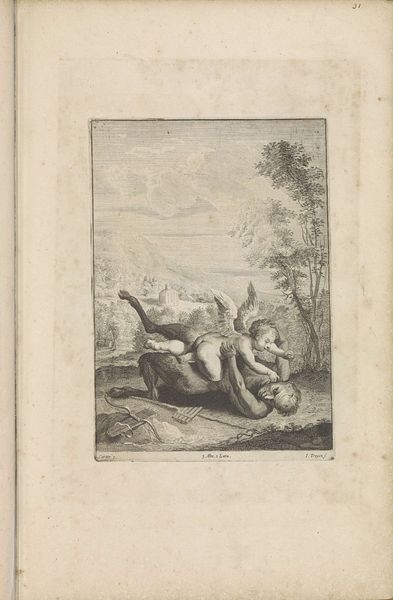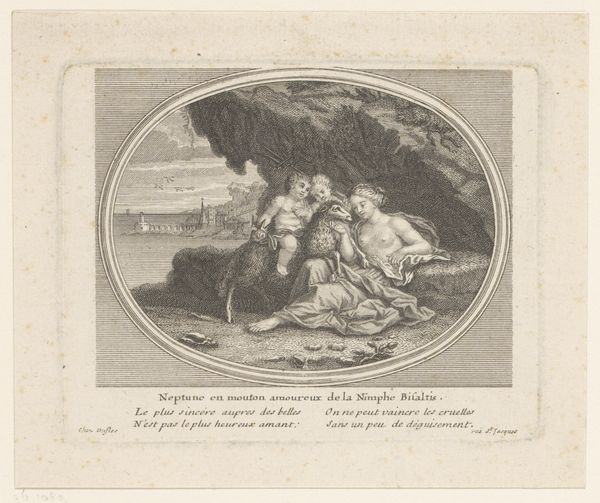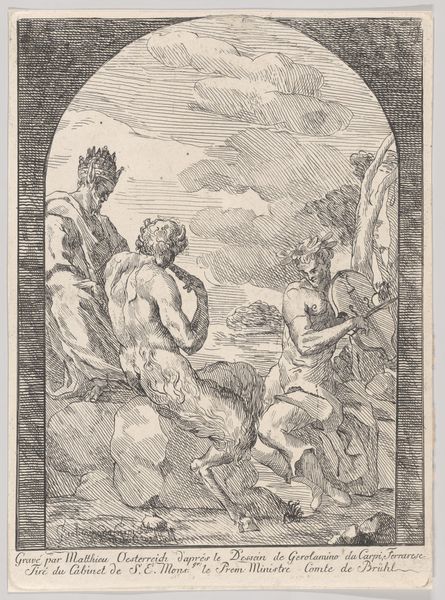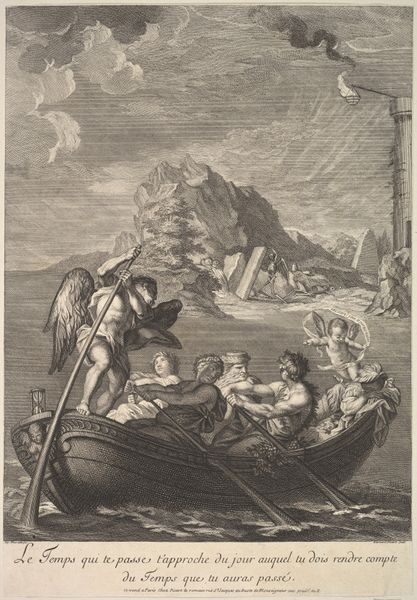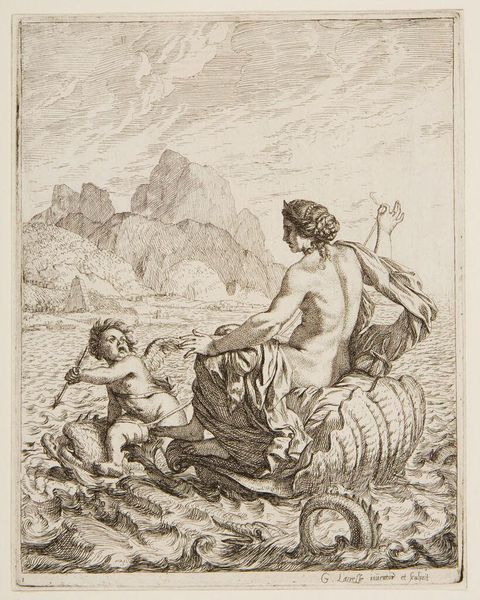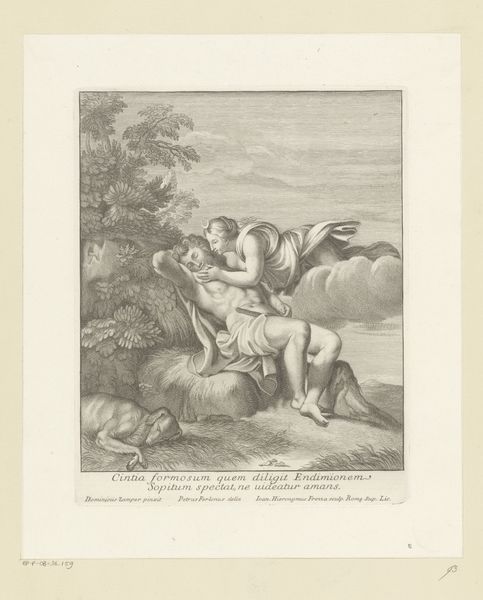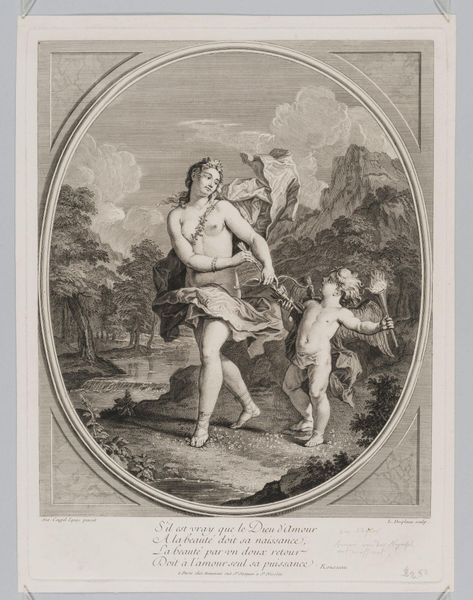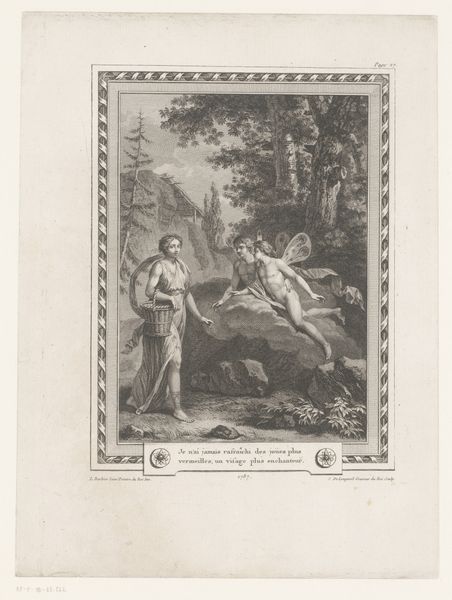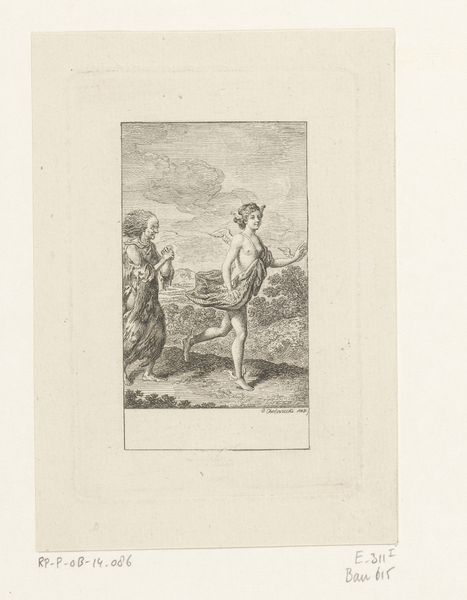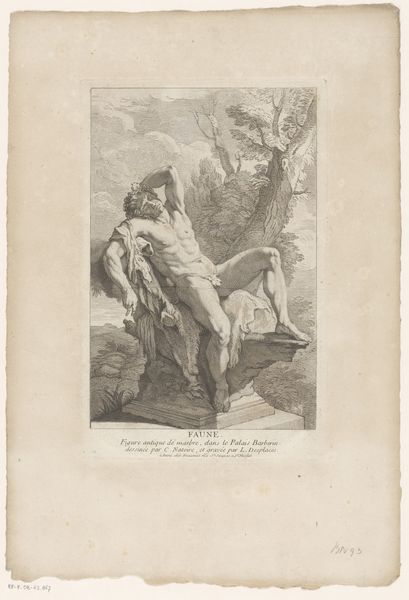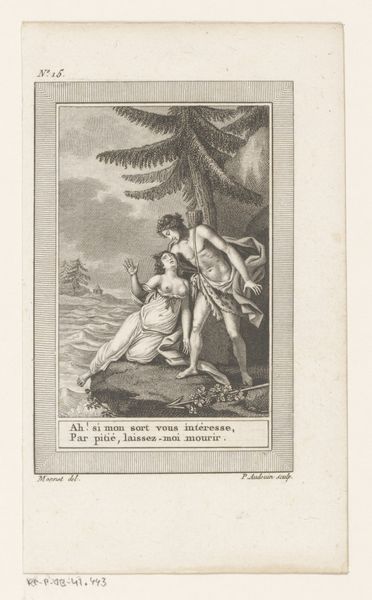
Den skibbrudne Niels Klim reddes af to Qvamiter i en vidiebaad 1786 - 1787
0:00
0:00
Dimensions: 184 mm (height) x 121 mm (width) (Plademål)
Curator: This is an engraving by J.F. Clemens from around 1786-87. The title, in Danish, translates to "The shipwrecked Niels Klim is rescued by two Quamites in a basket boat." Editor: The immediate impression is one of vulnerability and precariousness, both of the individual struggling in the water, and the roughness of the boat and churning sea around them. The very act of rescue seems fraught with difficulty. Curator: Absolutely. The print illustrates a scene from Ludvig Holberg's satirical novel, "Niels Klim's Underground Travels." It is worth examining the role of travelogues in shaping 18th-century views of alterity, otherness, and gendered power structures. Here, Niels Klim is saved by inhabitants of the "underworld," a society where traditional power dynamics are subverted. What impact could these visual representations have on social norms of the time? Editor: We must think too, of the technical production involved. Look at the cross-hatching! The printmaking process allowed for wider circulation of such subversive ideas through affordable replications. These images enter homes and workshops, and provoke discussions across societal ranks. Curator: Precisely. Holberg was a figurehead of the Enlightenment era in Denmark and Norway, questioning authority. This image, this single moment extracted from the story, visualizes that disruptive potential for all who encounter it. Editor: Moreover, think of Clemens himself and the materiality of his tools—the burin in his hand—making social satire manifest. This engraving isn't merely reflecting established norms but, through skilled labor, contributing actively to the ferment of ideas. How many prints like this were in circulation? What was the state of literacy at the time, what part did affordable art play in disseminating narratives, social models? Curator: Reflecting on the intersectional dimensions embedded within this print is essential for understanding the historical currents. We gain perspective on 18th century discourses and perhaps also begin to question current day power imbalances. Editor: And I would propose that by examining its making and its material availability, we can ask further critical questions around labour and its means in cultural production.
Comments
No comments
Be the first to comment and join the conversation on the ultimate creative platform.

